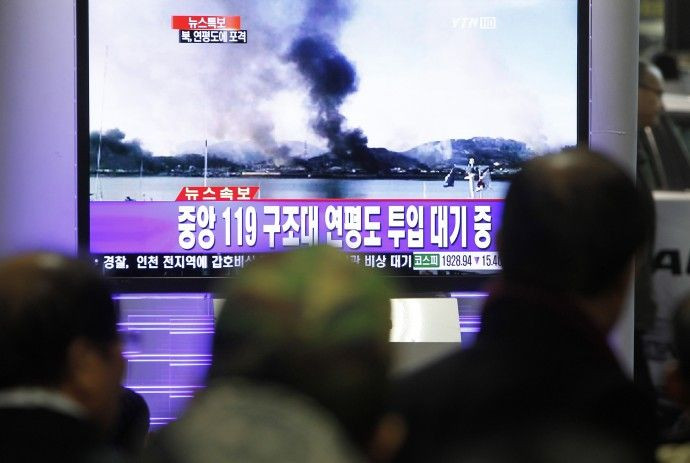Two South Korean soldiers killed, civilians injured in North's artillery attack

At least two South Korean soldiers have been killed and 14 others are injured in the North's shelling, according to South Korean media reports. The ministry of defense in Seoul is yet to confirm the reports and causalities on the other side remain unknown. Tensions are escalating in the region as fighter jets have been deployed on the South Korean side of the border for retaliatory action.
This is for the first time that North Korea fired artillery shells at a South Korean island and even resorting to a torpedo attack. Authorities are evacuating the Yeonpyaong Island in the Yellow Sea which houses around 1,400 residents. The shelling reportedly set fire to buildings, prompting a return of fire by the South.
Several civilians were reported to have suffered injuries, the Korea Herald reported.
Meanwhile, authorities in Seoul have concluded an emergency meeting over the current tensions. The attack from North Korea comes just a day after top US Envoy on North Korea played down the reports of a crisis in the region. South Korea on it part also stated that it would consider redeploying US tactical weapons along its borders. The weapons were removed from the country in 1991 by the Bush administration. Around 28,500 U.S troops are stationed in the country with no further troop reductions planned. Washington has also repeatedly recommitted itself to defending the South from possible nuclear attacks from the 'North'.
United States' top envoy on North Korea, on Monday, stated that the evidence of a new North Korean nuclear activity was provocative.
The U.S. special representative for North Korea policy, Stephen Bosworth, maintained that that North Korea has been in violation of United Nations resolution. Bosworth was rushed to Seoul on Sunday, amid fresh reports of nuclear activity in North Korea. An American nuclear scientist who visited North Korea earlier this month told media that he was shown a vast new facility built to enrich uranium.
Siegfried S. Hecker, a Stanford professor, maintained that he was stunned by the sophistication of the new plant. The U.S. delegation is in Asia for consultations with Seoul, Tokyo and Beijing.
North Korea in recent months announced willingness to rejoin the six-party talks. Though China and Russia have proposed to restart the talks at the earliest, United States has refused to consider the request insisting for an appropriate response from the North on the nuclear activity.
There would be no talking just for the sake of talking, Bosworth told reporters.
Meanwhile, China expressed concern over the reports on North Korea artillery shells striking the South's territory. It called for immediate resumption of the six-party talks.
We have taken note of the relevant report and we express concern over the situation, Foreign Ministry spokesman Hong Lei told reporters in Beijing on Tuesday.
What is imperative now is to restart six-party talks, he added.
North Korea is currently believed to have developed an arsenal of up to 12 weapons based on plutonium. Experts are wary of its ambitions and suggest that it is highly likely for Pyongyang to succeed in developing Hydrogen bombs rapidly.
© Copyright IBTimes 2025. All rights reserved.





















